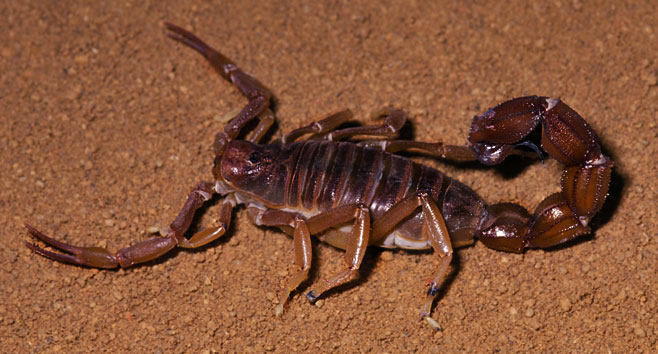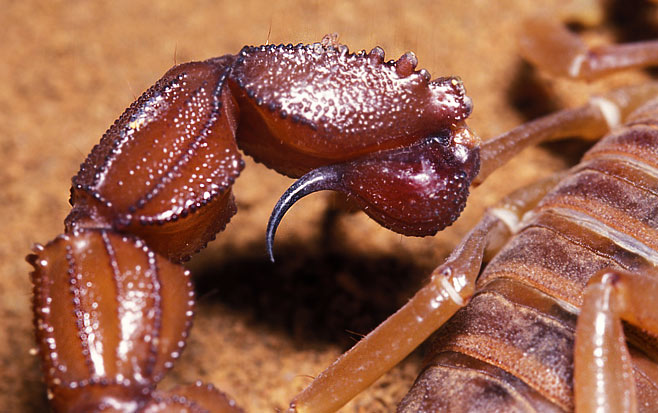|
Parabuthus granulatus (Granulated
thick-tailed scorpion)
Life
> Eukaryotes
>
Opisthokonta >
Metazoa
(animals) > Bilateria > Ecdysozoa > Panarthropoda > Tritocerebra >
Arthropoda > Arachnomorpha > Cheliceriformes > Chelicerata > Euchelicerata
> Arachnida > Scorpiones
(scorpions)
> Superfamily: Buthoidea > Family: Buthidae >
Parabuthus
 |
|
Parabuthus granulatus. [image
N. Larsen ©] |
 |
|
Parabuthus granulatus sting. [image
N. Larsen ©] |
The Granulated thick-tailed scorpion is large, about 115 mm
in length and dark yellow to brown in colour. It has a relatively small vesicle
compared to other species. It occurs from just north of Cape Town to northern
Namibia and Angola, eastwards into the Northern Province and western Zimbabwe
then southwards to the Eastern Cape but does not appear to be common, unlike
other buthids that have a restricted range in which they are common.
Parabuthus granulatus inhabits hard packed sandy and gritty soil where
burrows are found at the base of shrubs, grass tufts under logs and stones. It
occurs in disturbed areas and actively runs about seeking prey which is possibly
the reason that it is the scorpion reported in most serious envenomation cases.
This scorpion is responsible for most of the serious cases of envenomation in
South Africa. Parabuthus granulatus is responsible for 4-6 deaths in the
Western and Northern Cape each year. The venom is more toxic than Parabuthus
transvaalicus.
Text by Norman Larsen
©. |
